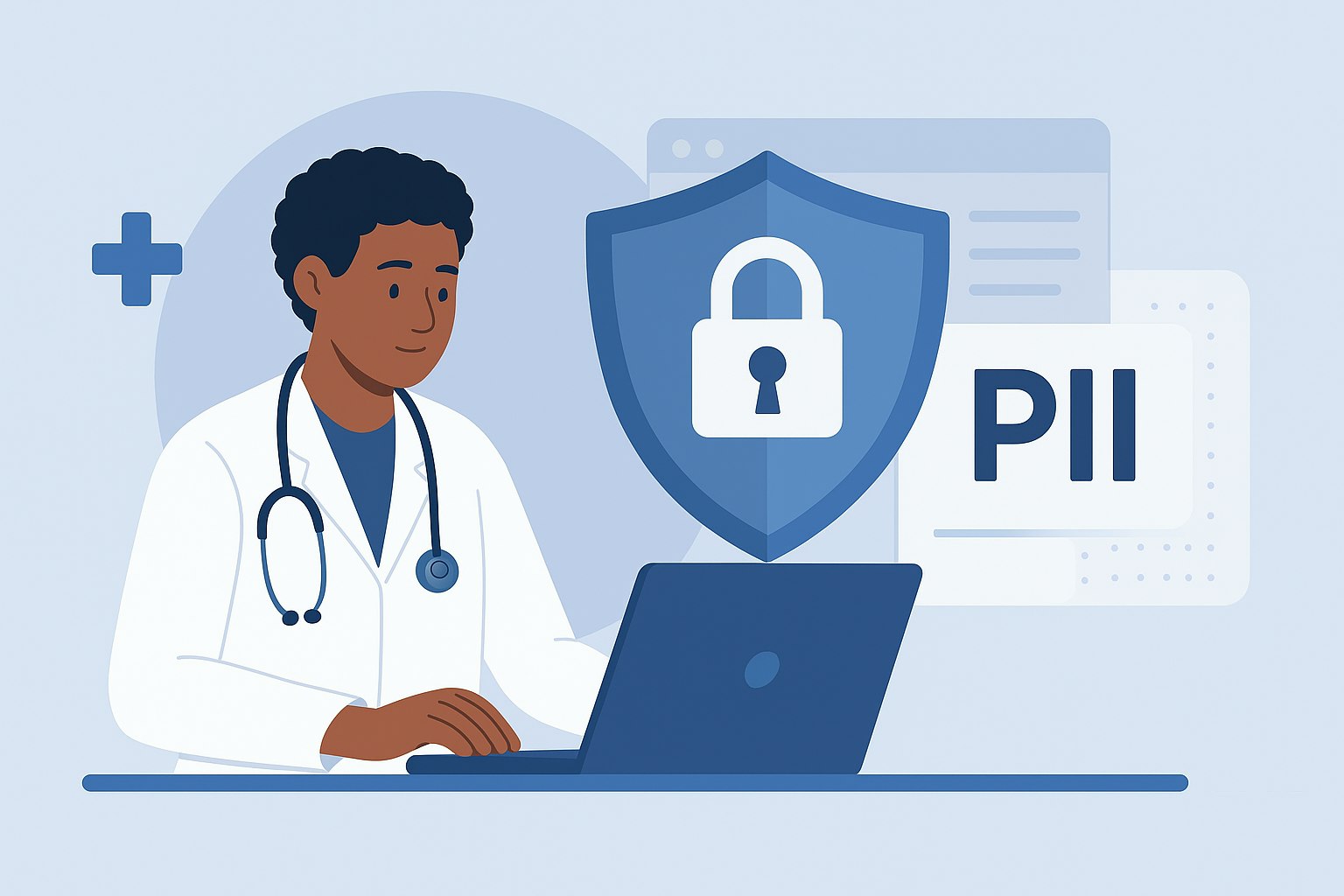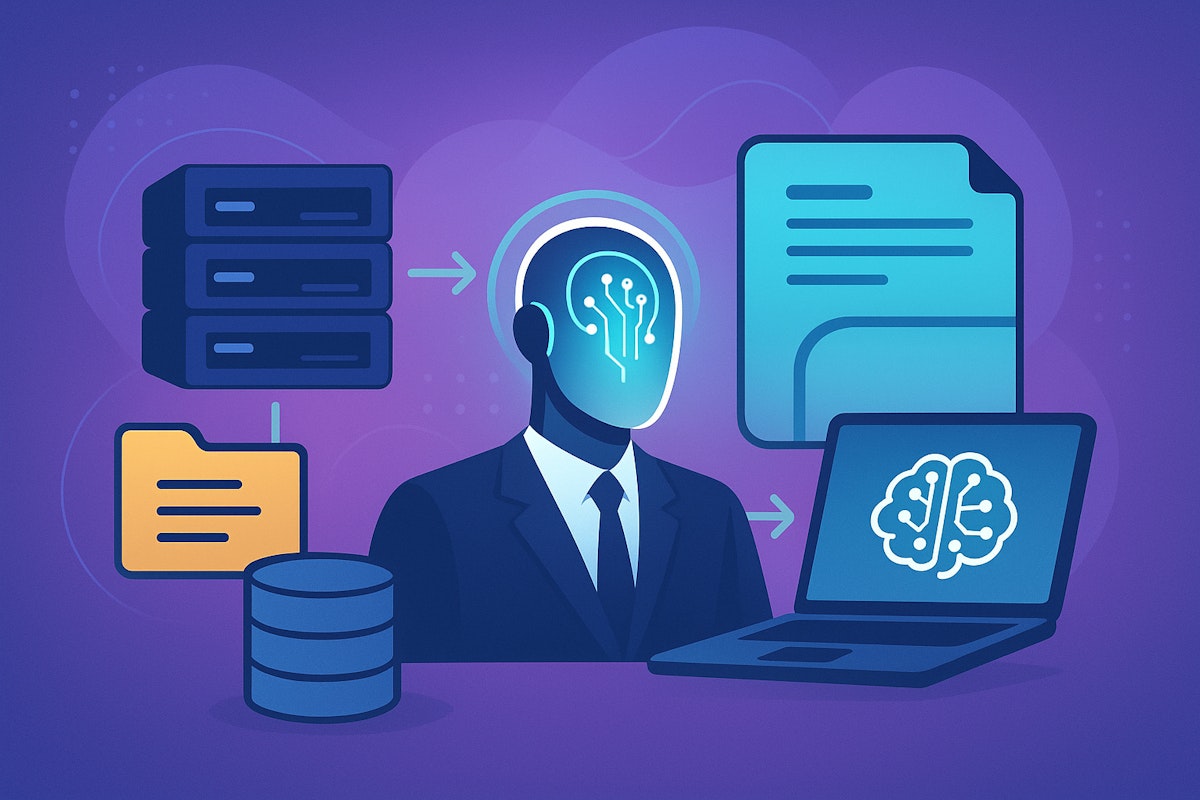Table of Content
If you’re in the healthcare industry, you obviously handle large volumes of patient data, such as lab results, clinical notes, scanned consent forms, and bills on a daily basis. Each file carries more than numbers or text. It holds someone’s identity, their story, their trust in your care.
So it’s an understatement to say that healthcare is a risky business. Just imagine – a single unmasked name in a discharge summary or a stray record in a research export can expose sensitive information to people who aren’t meant to see it.
The challenge here isn’t the absence of data masking tools. It’s that most of them rely on rigid, rule-based filters that miss the nuances of real healthcare data, including abbreviations, clinical shorthand, scanned forms, and handwritten notes.
AI-powered PII masking helps you do exactly that. In this blog post, we’ll unpack how the AI masking pipeline works, the technologies that make it accurate, and how you can deploy it confidently across your healthcare data infrastructure.
How an AI-Powered PII Masking Pipeline Works
1. Secure data ingestion
The AI masking pipeline begins by connecting to approved healthcare data sources, such as EHR databases, HL7/FHIR APIs, imaging repositories, and scanned document archives. Each connection is authenticated and encrypted. All processing occurs inside your secure network.
2. PII detection and classification
Once the data is ingested, the pipeline’s detection layer identifies potential personally identifiable information (PII).
Natural language models analyze structured and unstructured text, while Optical Character Recognition (OCR) components extract text from images and handwritten notes. Each detected entity, such as names, addresses, and birth dates, is labeled and classified by sensitivity.
3. Context validation
This layer refines detection accuracy. Healthcare domain-trained AI models evaluate surrounding language to determine whether a detected term is genuinely personal data.
This setup helps prevent false positives—for example, medical terms that look like names or numeric codes that resemble IDs.
| Detected Term | Raw Context | Naive Detection | Accurate Interpretation |
|---|---|---|---|
| Parkinson | “Diagnosed with Parkinson disease in 2021” | Misidentified as a person’s surname | Correctly recognized as a medical condition |
| A1C | “A1C levels remained stable after medication” | Misidentified as an alphanumeric ID | Correctly recognized as a clinical metric |
| Johnson | “Johnson & Johnson vaccine administered” | Misidentified as a patient name | Correctly recognized as part of an org name |
4. Masking and tokenization
After validation, the masking engine applies protection rules. In healthcare workflows, identifiers are irreversibly masked to prevent re-identification. In research or test environments, tokenization may be used instead, enabling re-linking under strict access controls.
5. Audit and compliance logging
Every masking operation generates a detailed audit record. The pipeline logs each detection, validation, and transformation with a timestamp, user ID, and confidence level. These immutable logs provide verifiable evidence of compliance for internal and external audits.
AI Techniques Behind the HIPAA-Compliant PII Masking Solution (+ Best Practices by Intuz)
1. Natural Language Processing (NLP) and Named Entity Recognition (NER)
NLP models trained with NER understand clinical text and learn from sentence formation and punctuation, just as healthcare professionals do. They can identify specific phrases that represent personal details, such as names, addresses, and locations hidden inside reports.
For example, if a discharge summary says, “John visited our cardiology department on January 12,” the model flags both “John” and “January 12” as potential identifiers while correctly ignoring medical terms like “cardiology.”
Intuz Recommends
A good practice when designing pipelines is to start with a single rule: privacy has no value if the masked data becomes unusable. A dataset that can’t support analytics or model training is a lost asset. Therefore, instead of removing identifiers entirely, generalize or tokenize them to preserve the analytical signal—as shown in the table below:
| Field | Before Masking | After Masking | Utility Preserved |
|---|---|---|---|
| Date of Birth | 06-12-1985 | Age Group 30–39 | Demographic cohort trends |
| ZIP Code | 94107 | 94*** | Regional health analysis |
| Hospital ID | HSP-24590 | Token-A81F | Operational linkage without identity exposure |
This balance—utility without exposure—is where HIPAA’s technical safeguards meet practical data science.
2. OCR and computer vision
OCR converts scanned documents, fax images, and archived paper forms into machine-readable text. This is paired with computer vision models that analyze visual page layout.
For instance, an AI vision model can scan a handwritten consent form and detect the patient’s name or signature even if the handwriting is inconsistent or partly obscured.
Intuz Recommends
Never rely on one model or algorithm to detect and mask PII. A single model might miss entities or misclassify terms, especially in diverse datasets. Instead, layer

That way, when a new data source is introduced (e.g., imaging reports, dictations), it’s easy to add a specialized model without changing the core pipeline.
3. Regex and pattern recognition models
Structured identifiers (e.g., MRNs, insurance IDs, SSNs) follow predictable patterns, and you know how social security numbers, patient IDs, and insurance codes often conform to specific formats, like the ones you see below:
| Identifier Type | Example Format | Typical Pattern | Common Variation |
|---|---|---|---|
| Medical Record Number (MRN) | MRN-2048 | Prefix + 4 digits | 2048-MRN, MRN2048 |
| Insurance Policy ID | A12-456-789 | Letter + digit groups | A12 456 789, A12/456/789 |
| Social Security Number | 123-45-6789 | 3-2-4 digit grouping | 123456789, 123 45 6789 |
So if one system records a patient ID as MRN-2048 and another as 2048-MRN, the Regex would alone only detect the first version.
The pattern-recognition layer will then evaluate the character structure, ordering, and formatting variations to identify both as the same type of patient identifier, even when the format changes across systems.
Intuz Recommends
- Each time the masking model or underlying data schema changes, trigger an automated validation cycle.
- Start with a fixed, anonymized, and versioned validation dataset. For each pipeline run, compare the model’s new outputs against the reference set and record key performance metrics, such as precision, recall, and F1 score, in a monitoring dashboard.
- If accuracy falls below the threshold you’ve defined, the deployment should pause automatically, and retraining should begin right away.
4. Contextual understanding with Large Language Models (LLMs)
Healthcare records often comprise ambiguous terms that can function as either medical concepts, locations, or personal names. LLMs resolve this by assessing the meaning behind the keywords. Let’s take this as an example: “Washington was discharged on Monday.”
Here, a rule-based system may classify “Washington” as a location. A context-aware LLM, on the other hand, will correctly infer it as a patient’s surname (not a US state) based on sentence structure and clinical usage patterns.
Intuz Recommends
- Use the LLM only as a context validator after initial PII candidates are flagged. Instead of scanning the entire record, pass the model a small context window around the suspected term and have it answer a strict yes/no question.
- Examples include whether the term refers to a person’s identity in that specific sentence. The model should return only a structured label.
5. Domain-specific anonymization models
In healthcare, generic anonymization isn’t sufficient because compliance rules distinguish direct identifiers (e.g., names, phone numbers) from quasi-identifiers (e.g., birth dates, ZIP codes) and require different handling for each.
For instance, a birth date may be generalized into an age range for analytics, while a phone number may be fully redacted in operational systems. Let’s see what this looks like in practice:
| Data Element | Identifier Type | Typical Action | Example Output |
|---|---|---|---|
| Patient Name | Direct Identifier | Full Redaction | ████████ |
| Phone Number | Direct Identifier | Replacement / Tokenization | Contact_ID_9834 |
| Birth Date | Quasi-Identifier | Generalization | 65–70 years |
| ZIP Code | Quasi-Identifier | Partial Masking | 941** |
Domain-specific anonymization models ensure privacy protections are applied appropriately, while still preserving the usefulness of clinical data for research, reporting, and model training.
Intuz Recommends
- Build audit logs that are both machine-readable and human-auditable. Each record includes the operation type, a timestamped, masked field, a confidence score, and the model version used.
- For long-term integrity, hash each log entry and in it, include the previous entry’s hash (a hash chain). Any modification breaks the chain and is flagged instantly. Here’s an example of a simplified audit log record:
| Timestamp | Operation | Field | Model Version | Confidence | Checksum |
|---|---|---|---|---|---|
| 2025-09-17 14:23 | Mask | Patient_Name | NLP-v3.1 | 0.98 | 72F6A1C3 |
How Intuz Helped This AI SaaS Platform Client Enhance Case Management
CasePath sought to develop a SaaS web application for companies and agencies to deliver child protection and family welfare services. Here’s what our AI development company achieved for the client:
- AI‑driven case summaries to speed up reviews and decisions
- Subscription model for predictable revenue and scalable usage
- Dynamic form builder for quick process changes without new dev cycles
- Multi‑tenant architecture for secure workspaces and lower management overhead
How Intuz Helps Healthcare Companies in Their HIPAA-Compliant PII Masking Initiatives
At Intuz, our approach begins with understanding how data moves through your environment. We study how records are stored, accessed, and shared across departments.
Based on that homework, our teams develop domain-trained AI models that identify personal information within both structured and unstructured healthcare data.
These models understand the way clinicians write notes, how identifiers appear in forms, and how medical abbreviations can change meaning across systems. Plus, every solution we build operates on a secure foundation.
All data remains encrypted, strict IAM policies control access, and masking actions are automatically logged for compliance review. The infrastructure adheres to HIPAA and ISO 27001 controls, providing your compliance and IT teams with verifiable assurance of data protection.
Integration happens within your current environment. The masking engine connects through APIs to your existing EHR, LIMS, or data warehouse systems. Data processing continues as usual, but every output from those systems is automatically sanitized.
Deployment is flexible, too. Our AI development company containerised every component so it can run on local servers or in private cloud infrastructure. This keeps control in your hands and ensures consistent performance across departments or facilities.
As your data volume grows, the same system can scale through automated orchestration without redesign. Each implementation is tracked against clear results. We measure processing speed, detection accuracy, and compliance readiness before and after deployment.
Book a free consultation with Intuz to map one of your workflows.
About the Author
Kamal Rupareliya
Co-Founder
Based out of USA, Kamal has 20+ years of experience in the software development industry with a strong track record in product development consulting for Fortune 500 Enterprise clients and Startups in the field of AI, IoT, Web & Mobile Apps, Cloud and more. Kamal overseas the product conceptualization, roadmap and overall strategy based on his experience in USA and Indian market.







